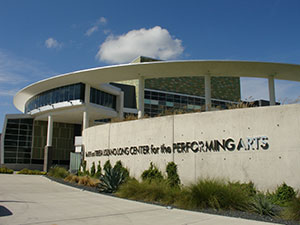Making the grade in accounting for school capital projects
 by Cathy L. Harlow
by Cathy L. Harlow
As children grow, technology evolves, and learning styles adapt to the times, districts are building, expanding and remodeling schools to roll with the changes.
These capital projects could entail the construction or renovation of a new athletic center, a state-of-the-art performing arts center, or even a whole new school building for a booming population. It could also involve a school consolidation or major renovations to bathrooms, elevators, parking lots, playgrounds, security infrastructure, or other needs, along with the acquisition of property.
In planning for current and future improvements, districts typically establish Capital Project Funds, which can include Capital Reserve Funds that have specific statutory limitations.
Why establish Capital Reserve Funds?
School districts face a multitude of needs. It can be tempting to use uncommitted funds to balance the budget or for other purposes, despite initial intentions to set money aside for a specific need, such as new construction.
Establishing a Capital Reserve Fund is a commitment by a school board and administration to set aside money for facility needs. Because transfers to the Capital Reserve are approved at a public meeting and recorded in the board minutes, it creates transparency as to how the board intends to use the funds.
Setting aside money in these funds allows districts to also avoid excessive short-term borrowing, eliminating associated interest costs and reducing the impact of such projects on students and taxpayers.
Pennsylvania’s school code offers two choices when setting up Capital Reserve Funds and district officials must understand the restrictions and how the type and timing of projects impact their decision.
The two types of Capital Reserve Funds
Fund 31 (Section 690 & 1850 of the School Code)
This fund accounts for money districts receive by levying a special tax earmarked for school building projects under a long-term program approved by the Secretary of the Department of Education (PDE). The building period cannot exceed five years from the date of the first deposit into the fund.
Fund 32 (Section 1431 of the School Code)
This fund accounts for money transferred from the General Fund for capital projects. Bond proceeds or other local, state or federal revenue received by the school may not be accounted for in this fund. In addition, transfers out of this fund are not allowed for any purpose.
Per the school code, expenditures from this fund are limited to capital improvements, the replacement of and additions to public works and improvements, the deferred maintenance of these improvements, or the purchase or replacement of school buses, and for no other purpose. PDE has determined that districts can include project-related construction and debt service expenses in this fund. The District must report debt service payments made from the Capital Reserve Fund as expenditures rather than recording them as transfers to another fund.
Budgeting for the future
Because of the restrictions both Capital Reserve Funds have, PDE recommends in Accounting Bulletin #2007-01 that districts designate funds for future construction projects within the General Fund. While designating these funds removes them from the available portion of the fund balance, it allows flexibility should the money be needed for unexpected emergencies.
Funds can be designated as either committed or assigned within the General Fund. A committed fund balance requires board action to designate money for a specific purpose. Board action can also remove the restriction on the use of funds. An assigned fund balance does not require board action but also reserves funds for a particular purpose.
The technology conundrum
One area that has created confusion and raised questions for many school administrators is the proper accounting for technology purchases. Should they be included in Capital Project funding or not?
We recommend that technology equipment that is not an integral part of a building project be purchased through a committed or assigned General Fund balance rather than a Capital Project or Reserve Fund. Typically, technology does not become a permanent part of the building and has a much shorter life cycle.
If you are unsure of the method to use, Boyer and Ritter is ready to offer expert guidance on the restrictions and requirements of Capital Project Funds.



